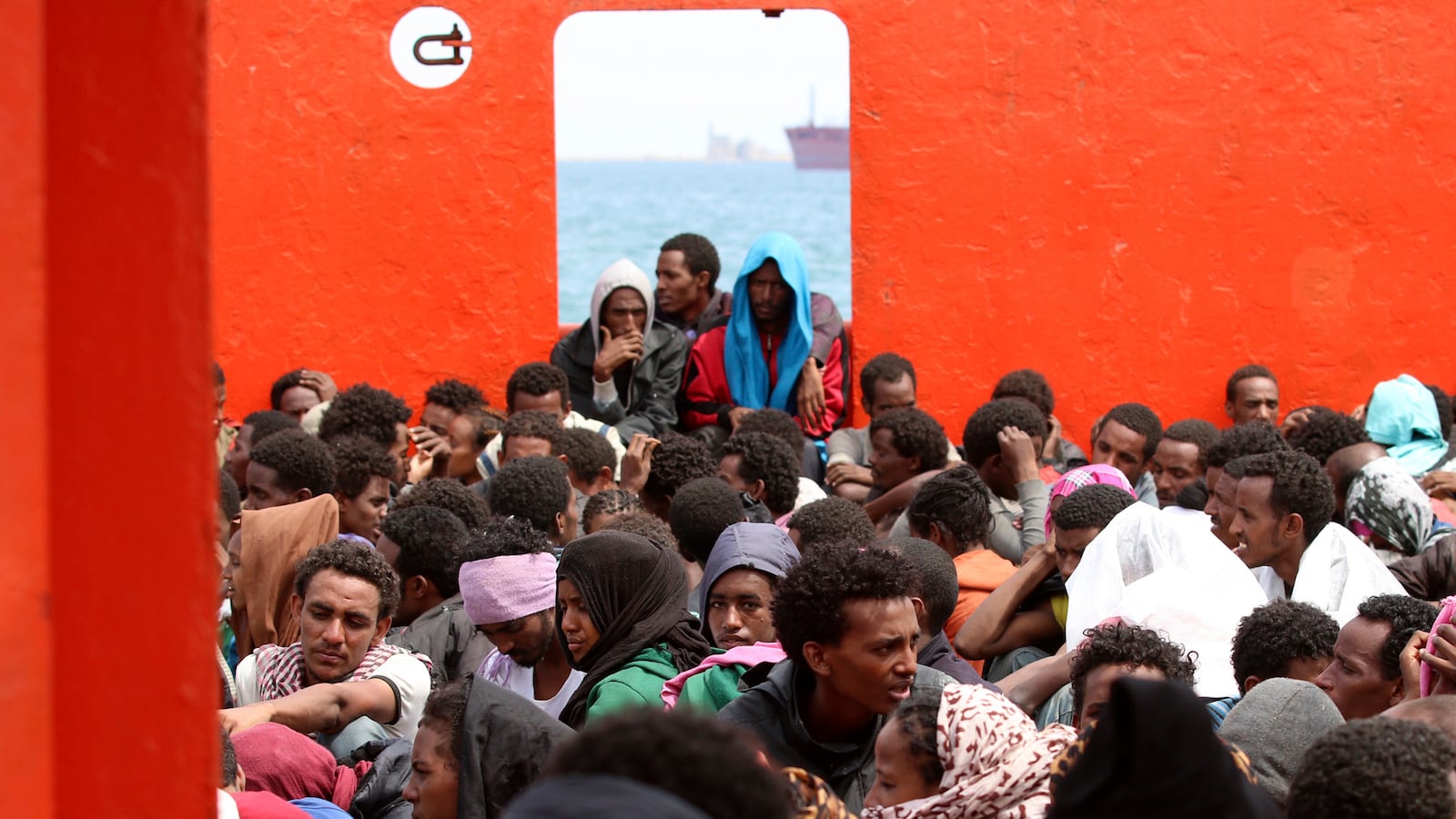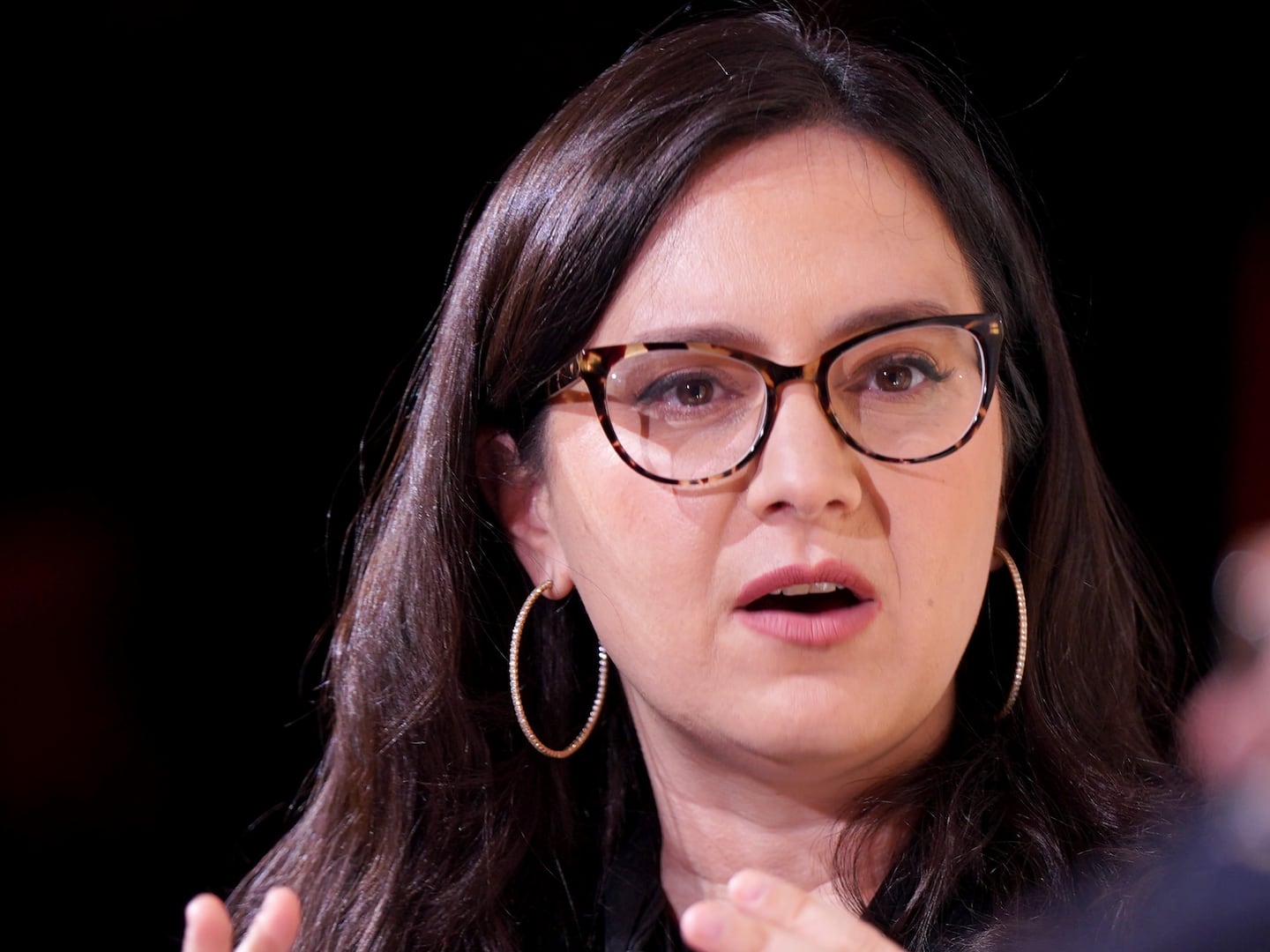ROME, Italy — During the 10-day period from the time the wrecked luxury cruise ship Costa Concordia began to rise from its watery grave off the shore of the small Italian island of Giglio to the moment when it began its impressive journey to Genoa in a spectacular $1.2 billion salvage operation, a few hundred miles away about 260 migrants died at sea in separate shipwrecks off the coast of Sicily. In the 30 months since the Costa Concordia capsized, killing 32 people, nearly 2,000 migrants have drowned in the Mediterranean.
Migrant ships do not get special salvage treatment or anything like the same level of media coverage. Instead they often sink in silence, bodies and all, to the bottom of the sea. Sometimes they are found. Often they are not. Because there are no champagne bottles, valuable jewels or important bits of hardware on the migrant ships, there is apparently no reason to pull them up. Or maybe it is just that, once out of sight, they are out of mind. Or maybe—most likely—they were never in our minds to begin with.
It’s not that we the media don’t care about the migrant deaths. In fact, more than a few times in Giglio, my Italy-based colleagues and I discussed the hypocrisy of paying so much attention to one cruise ship disaster and its 32 victims and so little attention to the hundreds of far-more fatal shipwrecks in the very same seas. It’s just that a not-so-subtle racism often guides what’s important when determining what is news and what is not. The wretched of the earth rarely make headlines, whether on land or sea. And when the stories are written or broadcast, in truth, they rarely are read or watched.
Migrant shipwrecks and refugee death stories become repetitive quickly. The first are news, the later ones are numbers. When people who are already victims fleeing war, famine, and poverty die tragically, we tend to look away, feeling guilty, feeling that something should be done but not, in the end, doing it. Affluent cruise passengers and their shipwrecks easily trump the migrant deaths because their stories are easier for Europeans and Americans to identify with, and also because they are more surprising: They are stories of good lives cut short too soon, not horrible lives cut short before they had a prayer of getting better. Even stories of cruise ships in trouble with leaky toilets and spoiled food are popular. Stories of migrant boats with no toilets or food at all are not.
I have covered the Costa Concordia since it ran aground in 2012, and I have covered many migrant shipwrecks in Italy, too. I have walked through the boat junkyards and cemeteries with unmarked graves in Lampedusa many times. I remember well the urine-soaked mattresses from those boats that are stacked in piles in the center of the island and the migrants sleeping on thin blankets in mud fields outside the overcrowded detention centers. It’s not a pretty picture. At least, not like the Costa Concordia draped in its billion-dollar salvage implements.
None of this is to say that the wreck and salvage of the Costa Concordia should have received less attention. It was a negligent accident that cost more than 30 lives, including a salvage diver who perished working on the wreck. It was followed by the largest-ever attempted salvage operation—already three times more costly than the value of the ship—and removing it saved the pristine waters and sea life in the Tuscan archipelago.
But even the Costa Concordia tragedy has its own subtle racism. In almost all of the coverage over the last week, there is scant attention paid to the last remaining victim whose body has yet to be found. He was Russel Rebello, a 33-year-old ship waiter from India who deserves to be recovered so his family can have closure. I can’t help but wonder if there would be more attention if the remaining victim were a yachtsman from California instead. One hopes we will never have to repeat such a careless cruise ship disaster to find out. I would hate to know the answer.






